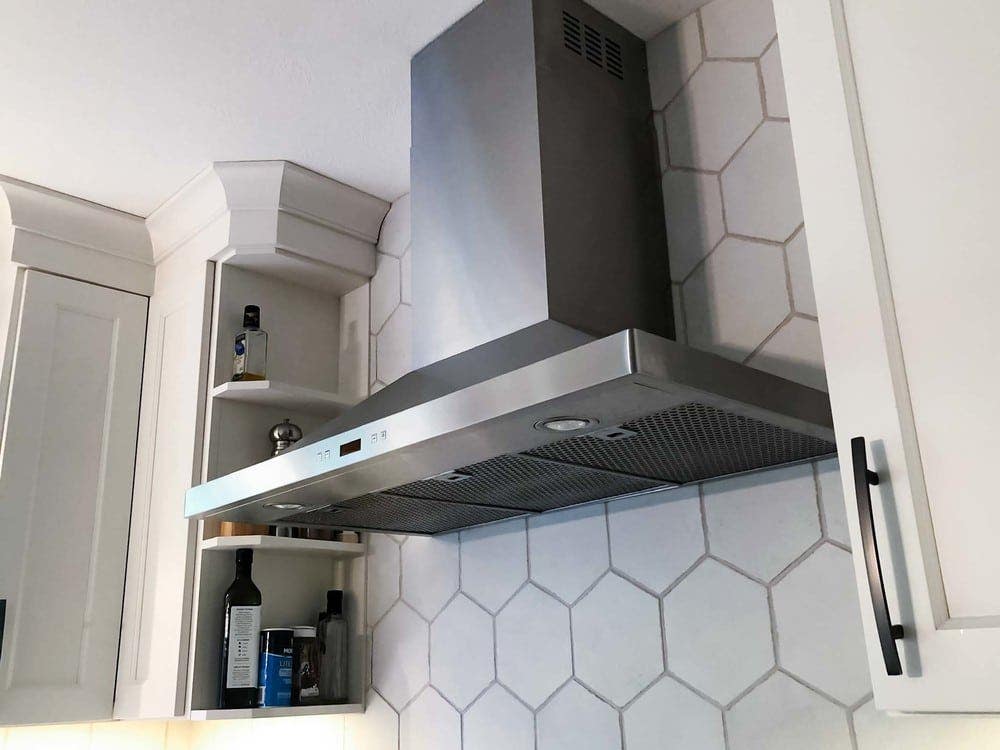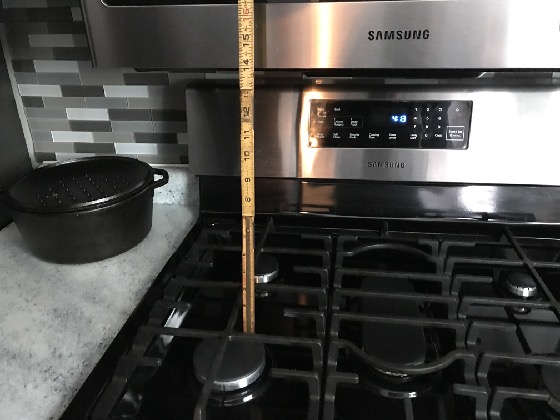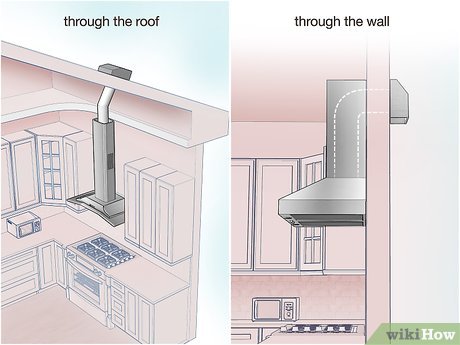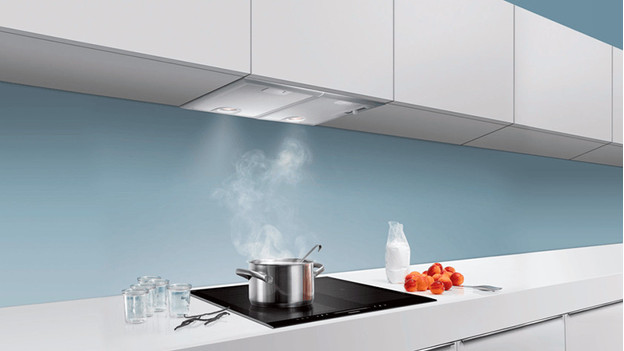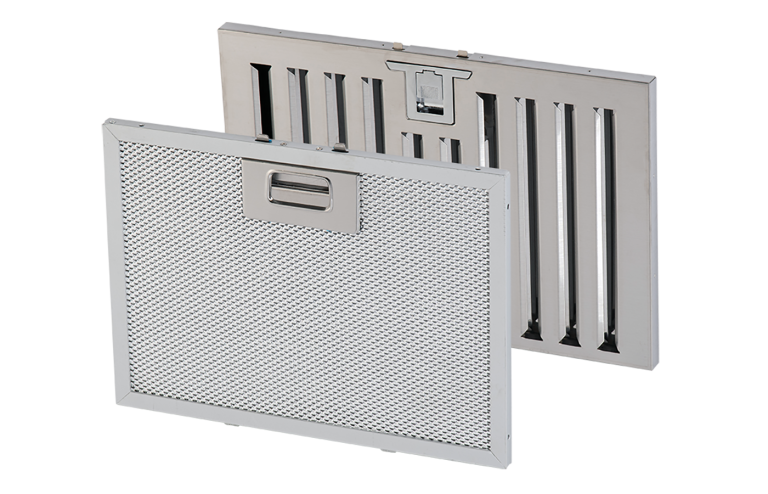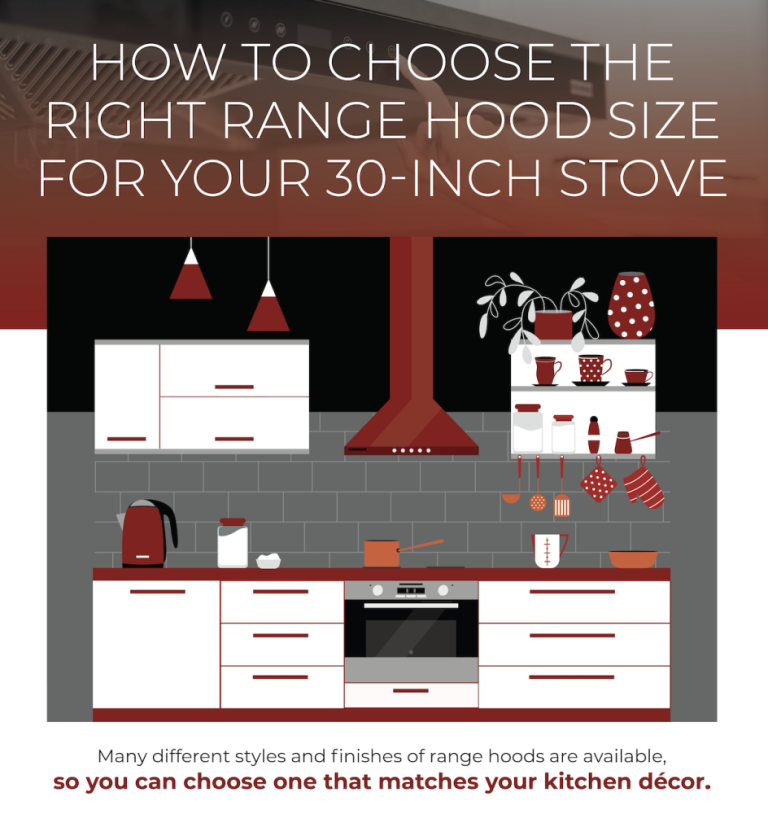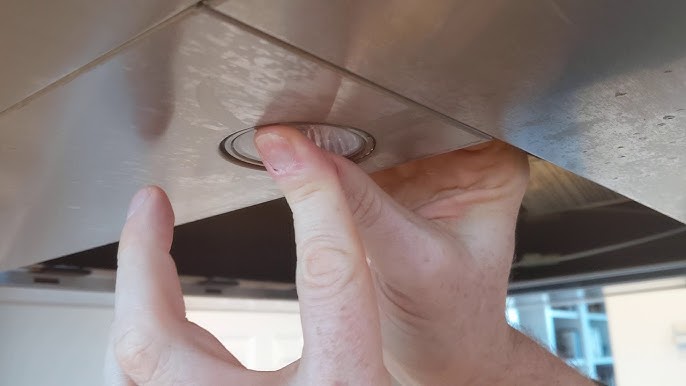300 CFM is generally enough for range hoods in smaller kitchens or for light cooking. For heavy-duty cooking, higher CFM is recommended.
Choosing the right range hood is crucial for maintaining a clean and odor-free kitchen. A range hood with 300 CFM can efficiently remove smoke, steam, and cooking odors in smaller spaces. It helps keep your kitchen air fresh and clean.
For larger kitchens or frequent heavy cooking, a higher CFM rating ensures better ventilation. It’s important to match the CFM to your specific cooking needs and kitchen size. Always consider your cooking habits and kitchen layout before making a decision. Proper ventilation not only improves air quality but also prolongs the life of your kitchen appliances.

Credit: prolinerangehoods.com
Introduction To Range Hoods
A 300 CFM range hood can be sufficient for small kitchens with light cooking needs. It effectively removes smoke and odors, ensuring a pleasant cooking environment.
Importance Of Range Hoods
Range hoods are vital in kitchens. They remove smoke, odors, and grease. This keeps the air clean. Cooking can produce harmful particles. These particles can affect health. Range hoods help to reduce these risks. They also prevent grease buildup. This can make cleaning easier. Cleaner kitchens are safer and healthier.
Basic Functions
Range hoods have a fan. This fan pulls air through filters. The filters trap grease and particles. Clean air is then released back into the kitchen. Some range hoods have lights. These lights help to see better while cooking. Range hoods also reduce heat in the kitchen. This keeps the cooking space comfortable.
Understanding Cfm
CFM stands for Cubic Feet per Minute. It measures air flow. Higher CFM means more air moved per minute. Range hoods use CFM to show power. A 300 CFM range hood moves 300 cubic feet of air each minute. This helps remove smoke and odors from your kitchen.
CFM is important for keeping your kitchen air clean. A higher CFM range hood removes more smoke and grease. This keeps your kitchen fresh and safe. For most home kitchens, 300 CFM is enough. It handles light to moderate cooking. For heavy cooking, a higher CFM might be better.
Factors Affecting Cfm Needs
A small kitchen needs less CFM. Larger kitchens need more power. Measure your kitchen in square feet. Multiply the area by 2. This gives you a rough CFM estimate. For example, a 150 square foot kitchen needs about 300 CFM.
Frequent cooking needs more CFM. Frying and grilling need extra ventilation. Light cooking needs less power. Consider your cooking style. Heavy cooking means you need higher CFM. This ensures better air quality.

Credit: prolinerangehoods.com
Is 300 Cfm Sufficient?
A 300 CFM range hood can be enough for small kitchens. The CFM rating tells you how powerful the range hood is. Higher CFM means better air cleaning. Small kitchens with light cooking needs may find 300 CFM suitable. For larger kitchens, a higher CFM is usually better. Ventilation is key to keeping your kitchen air clean.
If you cook often or use high heat methods, 300 CFM might be too low. Frying and grilling produce more smoke and odors. In these cases, a range hood with higher CFM is recommended. For kitchens with poor ventilation, higher CFM is also better. A range hood should match your cooking habits and kitchen size.
Comparing Cfm Levels
Determining if 300 CFM is enough for a range hood depends on your cooking habits and kitchen size. For light to moderate cooking, 300 CFM often suffices, but heavy cooking might require more power.
Low Vs High Cfm
Low CFM hoods are quieter. They use less energy. High CFM hoods remove more smoke. They are better for heavy cooking. Each type has its own benefits.
Pros And Cons
Low CFM hoods save energy. They are cheaper. But, they may not clear all smoke. High CFM hoods are powerful. They can be noisy. They cost more.
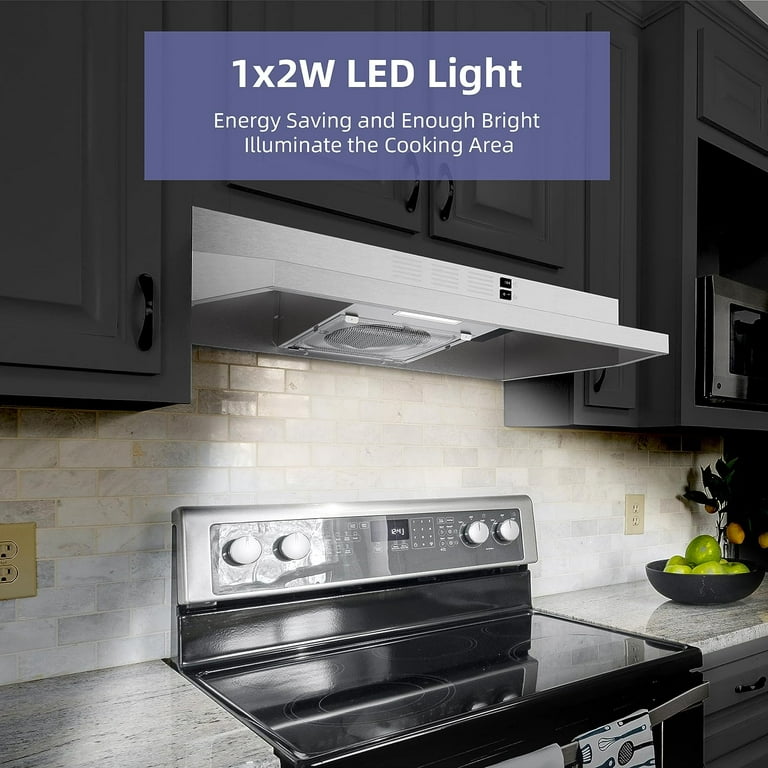
Credit: www.walmart.com
Choosing The Right Range Hood
There are various types of range hoods. Each type has its own benefits and drawbacks. Wall-mounted range hoods are popular. They attach directly to the wall above the stove. Island range hoods are for stoves on kitchen islands. Under-cabinet range hoods fit beneath kitchen cabinets. Another option is the insert range hood. It fits into custom cabinetry for a seamless look. Each type serves a different purpose. Choose based on your kitchen layout and cooking habits.
Several features are important when choosing a range hood. CFM rating is crucial. It measures the airflow of the range hood. Noise level is another key factor. Quieter models are better for open kitchens. Filter types affect maintenance. Some filters are dishwasher safe. Lighting options can improve cooking visibility. Hood size should match your stove size. Installation type may require professional help. Cost varies widely, so set a budget. Each feature impacts the performance of the range hood.
Installation Tips
Range hoods should be placed at the right height. Install the hood 24 to 30 inches above the cooktop. This ensures it captures smoke and steam. Too high or too low can reduce its effectiveness. Ensure it is centered over the cooktop. This helps in optimal air suction. Make sure to follow the manufacturer’s guidelines.
Proper ventilation is key. Use ducts that are short and straight. This helps in better air flow. Avoid sharp bends in the duct. They reduce the efficiency of the hood. Make sure the duct leads outside. Do not vent into the attic or walls. Use a duct with a diameter of 6 inches or more. This ensures better air movement.
Maintenance And Care
Regular cleaning keeps your range hood efficient. Wipe the exterior with a damp cloth. Use mild soap for tough stains. Clean the filters every month. Most filters are dishwasher-safe. Dry them completely before reattaching. Check the fan blades for grease. Clean them gently to avoid damage. Never use harsh chemicals on your range hood.
Check the power supply if the hood won’t start. Ensure the circuit breaker is on. Test the outlet with another device. Inspect the switch for damage. If the fan is noisy, check for loose parts. Tighten any screws if needed. Clean the fan blades to reduce noise. Replace the motor if it still makes noise. Ensure the duct is clear if the hood isn’t venting properly. Blockages can reduce efficiency.
Conclusion
Choosing the right range hood CFM is crucial for effective ventilation. For small kitchens, 300 CFM might be sufficient. Larger kitchens or heavy cooking require higher CFM. Always consider your cooking habits and kitchen size. Proper ventilation ensures a healthier cooking environment.
Make an informed decision for the best performance.
